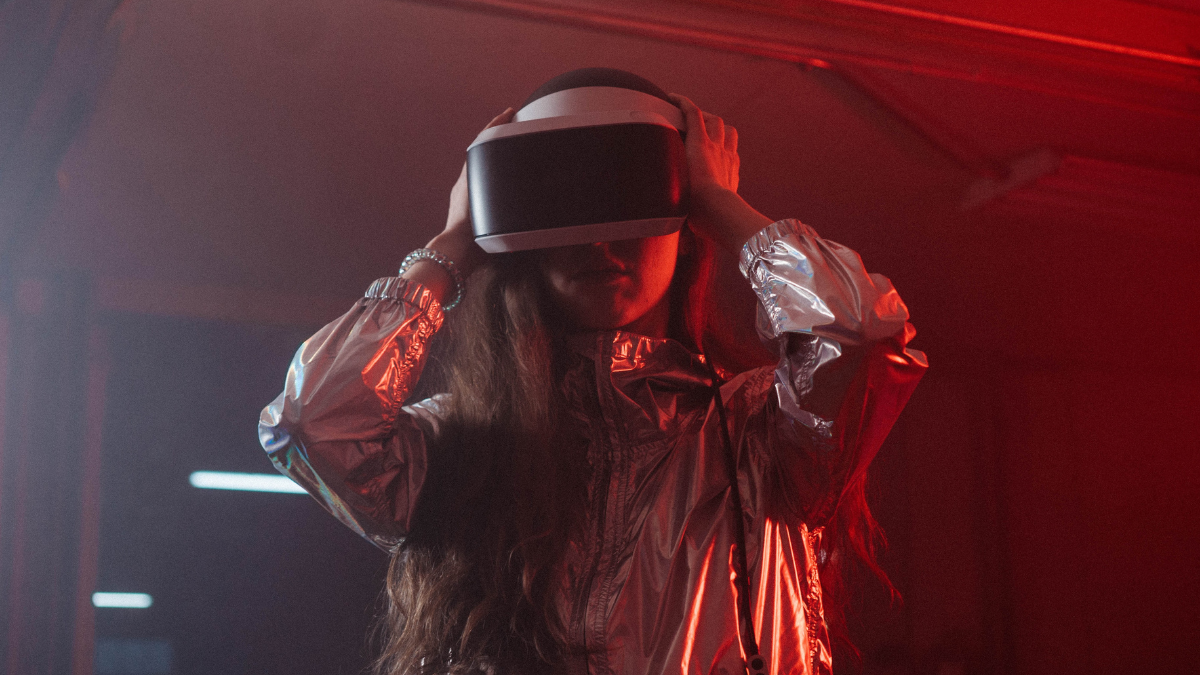As we head start 2024, two cultural forces are converging and setting the stage for the rise of spatial technology
The first force is a quiet rebellion against the collective overwhelm of digital content. In the busy hum of our digital landscape, where attention is a currency and distraction a familiar companion, an interesting undercurrent has begun to take hold. It’s been referred to as the Attention Recession and has manifested in things like the Slow Media movement, the rise of ‘dumb phones,’ the disconcerting post-modern ‘corecore‘ TikTok trend, and warnings of a subprime attention crisis as the quality of on-screen attention diminishes. People are trying to spend less time on-screen, or, if they are on screen, hoping to move through content more peacefully and leave split attention and multitasking behind. There is a yearning to be more immersed and escape the everything-everywhere-all-at-onceness of modern existence.
The second force is a growing cultural interest in getting outside and back into our bodies. After years ensconced in the glow of screens, there’s a desire to be active and reconnect with the outside world, especially among Gen Z and Millennials. This interest dovetails with a growing environmental consciousness, fostering an interest in digital experiences that bridge the gap between the virtual and the real and reconnect us with the world around us. As the allure of the natural world beckons, so does the desire for digital experiences that seamlessly integrate with those surroundings. These dual interests can be framed as a broader craving for ‘rewilding‘— both of humans (harkening back to our animal bodies) and our technology (yearning for it to be a part of and not apart from our environment).
Looking forward to the coming year, these dual cultural forces are poised to reshape the media and marketing landscape. Brands, recognising these shifts on top of fighting for attention in a complicated and cacophonous world, are set to re-evaluate their strategies and offer their audiences experiences that both immerse and re-connect. In reaction to these factors at play, the strategic move for brands lies in experimenting with spatial experiences — digital experiences grounded in three-dimensional space — which endeavour to create more meaningful connections in a world awash with noise.
Coinciding with these cultural shifts, the technological stage for spatial experimentation has been set with a year of notable developments. New advancements in Augmented Reality (AR) and Virtual Reality (VR) are poised to reshape the way we interact with the digital realm in our day-to-day life. AR has benefited from the developments of Google’s Geospatial API, advances in Visual Positioning Systems, and 8th Wall’s Sky Effects. These innovations promise to elevate AR, opening up possibilities for world-scale gaming and other immersive experiences that seamlessly blend the virtual and physical worlds. Simultaneously, the new Meta Quest 3 and the imminent Apple Vision Pro are poised to drive headset adoption like never before. There has long been scepticism around the price and comfort of headsets, but for the first time, we’re now seeing genuinely positive reviews, signalling a shift in public perception. These two headsets promise to transform our experience of reality and redefine our interactions with digital content.
With all of this new technology at our disposal, where do we go from here?
Why do we need this technology? And who is it for? We shouldn’t see spatial technology as just a novelty or innovation for the sake of innovation, but as a canvas for utility of all sorts. There are so many capabilities that are unique to spatial that we’re excited to explore with brands in 2024:
- With spatial, brands can command a quieter world, with 360-degrees of creative freedom to create a sense of focused presence. In transcending the screen with the illusion of no interface, brands can place their audiences within an experience, rather than outside it.
- As an interface, spatial recognises and responds to our intuitive movements, gestures, and expressions — the things so visceral that they precede language or any gesture we’ve learned to interact with a phone or computer.
- With spatial, a participant in an experience can turn into anyone or anything, transcending the limits of their physical form.
- Localised spatial experiences bring people together around virtual assets that are tethered to real-world locations and invite shared exploration and discovery.
- Through augmentation, spatial can reinvigorate tired walls of living rooms, classrooms, and streets alike, bringing adventure to a wider, more diverse audience by adapting to the needs of individuals and their specific abilities.
Taken all together, spatial offers brands an opportunity to transcend the boundaries of screens and step into a world of limitless possibilities.
Spatial technology is emerging not just as a technological trend but as a cultural shift. As we stand on the cusp of change in our preferred ways to engage with digital content, the promise of spatial is clear: it not only engages but transports, empowers, and connects. In the coming year, we’ll witness the unfolding of a historic chapter in our relationship with technology, where the digital and the physical converge, and immersion promises to become not just an escape but a way of life.
Featured image: Mika Matin / Unsplash

